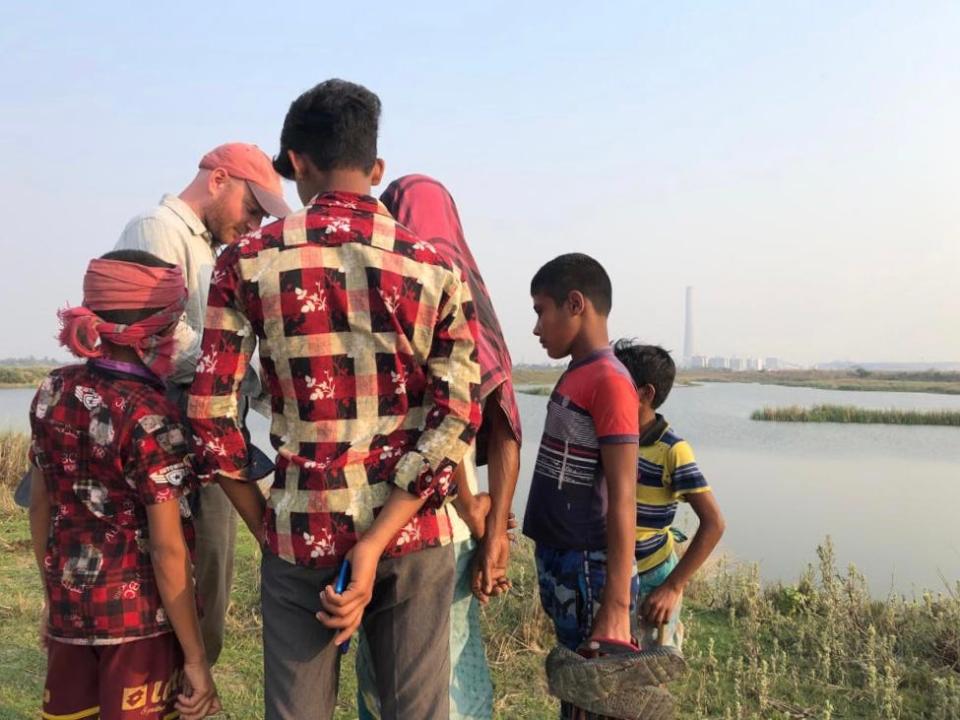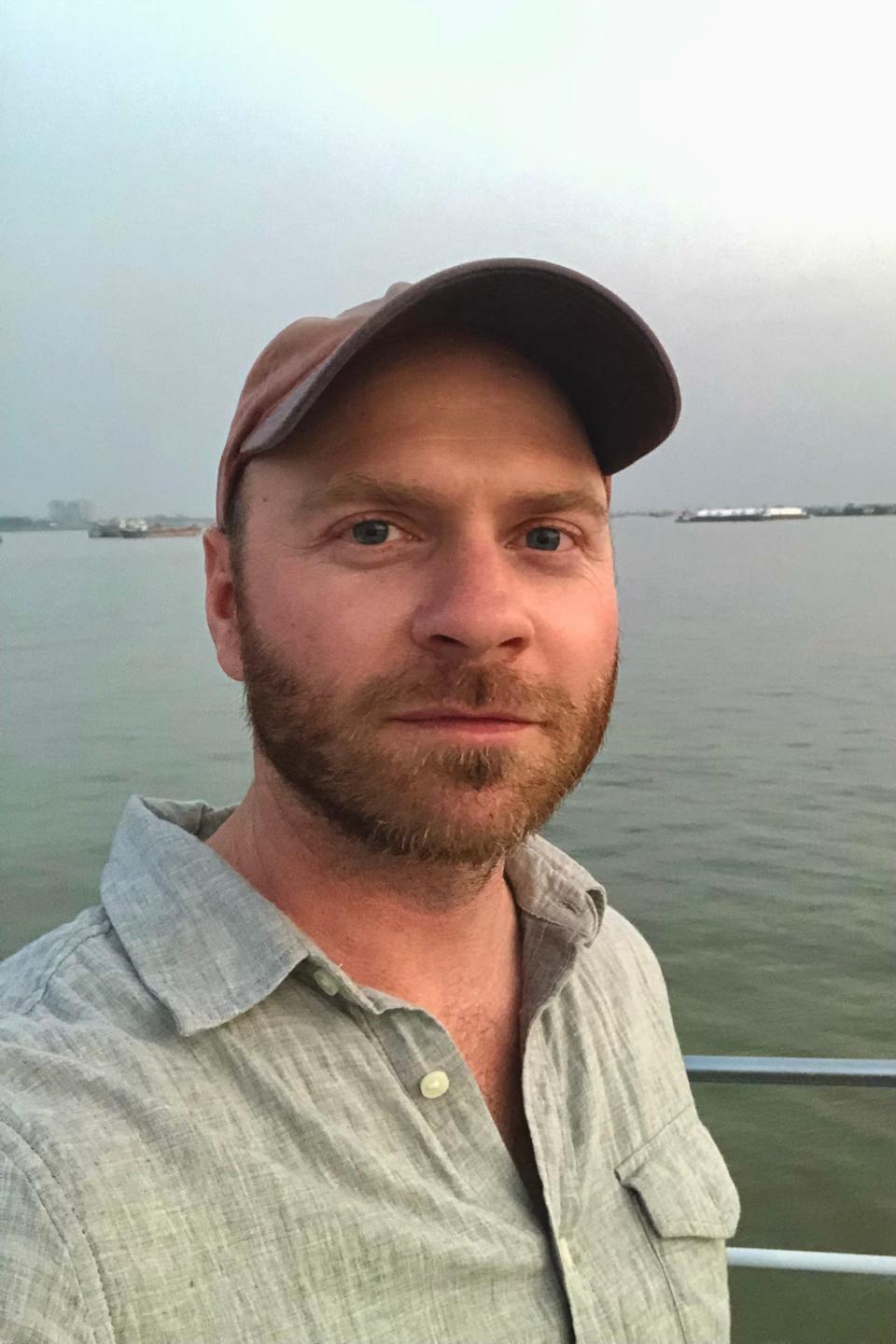From Arizona to Japan to Bangladesh, author offers lessons from water management mistakes
A book called "Over the Seawall" may not be the first one most Arizonans pull from the store shelf. But author Stephen Robert Miller, who was raised in Tucson, dedicated a third of his latest work to his home state's water concerns.
The nonfiction account of how humans have tried and often failed to establish dominion over the natural forces of water — too much or too little — was published by Island Press in October 2023, and Miller is now completing stops on his book tour.
He'll be at Changing Hands Bookstore in Phoenix at 6:30 p.m. Tuesday for a conversation with me about the making of the book and what he hopes Arizonans will take from it. But first we wanted to whet the appetite of anyone interested in attending with a Q&A about how Miller's research, which took him to Japan, Bangladesh and back home to Arizona, encapsulates the challenges of a warming climate that scientists say is making historically wet places wetter and dry places drier.
The subtitle of Miller's book, "Tsunamis, Cyclones, Drought, and the Delusion of Controlling Nature," gives more insight into what he set out to accomplish with stories about two wet places and one dry place — which might be to make the point, using beautiful narratives set in environmentally haunted places, that water will always control us more than we can control it. Through character-driven true tales, Miller raises important questions about humans' track record of using infrastructure to try to bend the rules of nature, and how we might be wise to move forward in ways better aligned with its flow.
"Once (the Phoenix area) has grown and increased its water use, it cannot pull back so easily. Planners have a brief window to avoid committing generations to wrenching decisions," Miller writes. "So far, though, the state has not produced a cohesive adaptation strategy to guide those choices. It appears that urban populations are sleepwalking into the same mistakes as the farmers — downplaying warnings, prioritizing growth over all else and believing they can build themselves out of any hole."
The conversation has been edited for length and clarity.

How did you get interested in this topic of failed attempts to control water, and how did you home in on these three examples in Japan, Bangladesh and Arizona to illustrate your points about storms, flooding and drought?
I kept reporting on stories about people having to undo their past decisions on where they had manipulated the landscape, and a lot of these had to do with places where ranchers and farmers had done things like straightening their streams in order to bring water to their land more quickly and efficiently. And what they had discovered in hindsight was that caused huge negative impacts to local ecology and really hurt people living downstream.
One example in the Pacific Northwest was that straightening a river caused the water to warm up and no longer be good habitat for salmon, and native communities downstream that were dependent on salmon were suffering pretty badly because of that. I just kept coming across stories like that where people had manipulated their landscape to make their lives easier, and years later were running into some negative consequences of that. And all of these things would be a problem on their own, but then when you factor in climate change, suddenly a problem becomes a catastrophe.
I grew up in Tucson and got my journalism degree at the University of Arizona, and one of my first paid writing gigs was at the Climate Assessment for the Southwest. So I've been thinking for a long time about climate in Arizona and where it's headed, and I always had this weird, unsettled sense in my stomach about the fact that this place is so hot and water is a serious issue. Then when I discovered the stories about what happened in Japan in 2011 with the tsunami and in Bangladesh (with sea level rise), all examples of people manipulating their environments only to have it come back and bite them, it all started to come together.

What do you think Arizonans can learn from the stories in your book about the situations in Japan and Bangladesh, and what do you think readers in those countries could learn from the situation in Arizona?
The Japan section was important to me because it sets up this whole idea of maladaptation and defines it in a nutshell. Climate change is this big, slow-onset thing that's difficult to wrap your mind around. It's very easy for people to not understand or see what's happening. And that's also true for drought and sea level rise.
I think it can be easy for Americans to look at what's happening in places like Bangladesh, and kind of just write it off as something that happens in poor countries. But Japan is this incredibly economically and technologically advanced country. So if it can happen there, I hope Arizonans will recognize they should relate to these people.
As an Arizonan, the way I looked at it was, the seawalls on the coast in Japan gave people a false sense of security. They lived behind these concrete structures that their governments and scientists had told them would hold up and protect them from whatever (nature) could throw at them. And they believed that up until the moment many of them were killed in (the tsunami) in 2011.
I think Arizonans run the risk of falling into the same trap with projects like the Central Arizona Project, the canal, and the never-ending debates over how to divvy up the Colorado River water. These are crises, and yet, the fact that there's some of this effort being taken and some of these projects being done, I think it makes people feel like things are being taken care of.
More: Water, climate, environmental justice: Bills to watch at the Arizona Legislature in 2024
The Bangladesh example is really all about colonialism, and the downstream and long-term impacts of what happens when outsiders come in and tell people how to protect themselves and their livelihoods. I think climate adaptation is going to have to be local and the solutions have to be specific to that place and actually work there. In Arizona, we had a way of divvying up our water dating back 100 years based on this old-school system from the East Coast. It took us too long to create a system for managing and sharing our water resources that actually applied to the desert environment we live in.
All of the disasters in the book have a climate component, with increasing greenhouse gas concentrations clearly linked to intensified storms, flooding and drought. But they all also have a development component, where there’s maybe just too many people living in unsustainable ways in places that can't support them given modern conditions and consumption levels. When trying to articulate this duality for your readers, how do you juggle the need to delineate the compounding effects of these two forces?
It's a good question, because there is this whole push within the science communicator and journalism industry to not downplay the impacts of climate change. But in the Bangladesh example, the bigger impact there is development and how do I explain that without making people feel like I'm just negating the impacts of climate change?
Read our local climate series: The latest from Joan Meiners at azcentral, a column on climate change
That was one of the challenges of writing this book and I think this book is challenging for readers because of that issue also, because it's looking at solutions from the perspective of somebody who's saying, 'hey, these solutions often fail.' And that's not something that people want to read right now.
But I think we have to challenge readers to hold these two ideas in their heads at the same time — to recognize that climate change is happening, it's making things worse, but also, the way we've built in the past has exacerbated these problems. And it matters when we think about adaptation because we're trying to show where this has happened so we don't repeat those histories of exacerbating the problems that climate change is already pushing.
Your book is full of warnings about failed solutions that were ill-conceived, rushed, inadequate or politically instead of scientifically motivated. Do you also have some examples of solutions that have worked in Arizona that you'd like to see us continue or lessons you'd like to see us take from this about responses to climate change and drought?
The first answer that comes to mind is the toilet-to-tap thing when it comes to drought. That's been so challenging in the U.S. (to convince people to accept), and that's not the phrase the people pushing this and developing it would like me to use. But we have this amazing ability to refine our drinking water and that allows us, if we would prioritize it, to save a heck of a lot of water and not have to go searching for outside water. So just from a technological standpoint, I think that's a great one.
Obviously, another one is to get rid of lawns. I think a lot of it has to do with development. We talk a lot about people moving to these areas; that growth is often the elephant in the room in these conversations. I'm not saying everyone in Phoenix needs to up and move to Minnesota. But what we desperately need is smart development.
Balancing growth and environmental risk: As Arizona builds to solve a housing crisis, will its homes withstand future heat extremes?
I think we need to be seriously considering where we're investing our dollars. I talk in the book about the number of data centers that are being built or have already been built in Phoenix, it's something like 36, and we all know they're incredibly water and energy intensive. And the water-energy nexus means that even if the facilities themselves might not be using a ton of water, there is water involved in getting our energy and there is energy involved in getting our water.
There are huge tax incentives through the state and local municipalities to get those data centers to come to Arizona and bring jobs, and I understand the economic incentives there. But that's also a leverage point that we should be using in thinking long-term. We need to think about what kind of development we incentivize. Green infill should be top priority and the type of industries coming into the desert should be top of mind as well.
Joan Meiners is the climate news and storytelling reporter at The Arizona Republic and azcentral.com. Before becoming a journalist, she completed a doctorate in ecology. Follow Joan on Twitter at @beecycles or email her at joan.meiners@arizonarepublic.com. Read more of her coverage at environment.azcentral.com.
Sign up for AZ Climate, The Republic's weekly climate and environment newsletter.
Support climate coverage and local journalism by subscribing to azcentral.com at this link.
This article originally appeared on Arizona Republic: Author Stephen Robert Miller finds global lessons for Arizona on water

